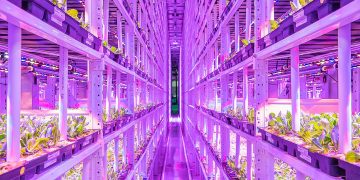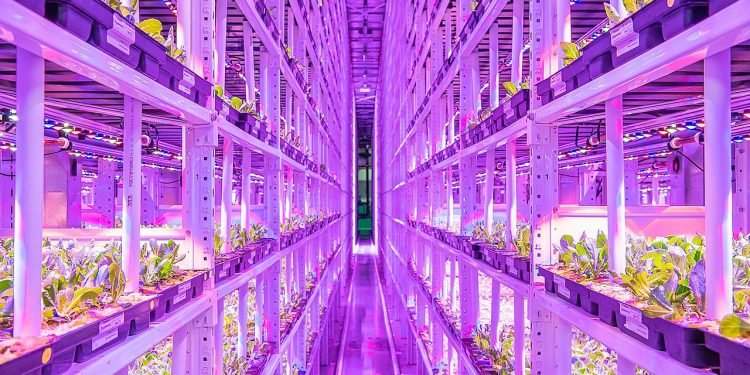Vertical farming is a revolutionary farming method that is gaining popularity due to its ability to create year-round sustainable food production. In this article, we will look at what crops can be grown on a vertical farm.
What is vertical farming and how does it work?
Vertical farming is an agricultural method that involves growing crops in vertically laid layers using controlled environment (CEA) growing technologies such as hydroponics or aquaponics. Totally Controlled Environment (TCEA) technology provides a fully predictable microclimate, with precise settings for environmental elements such as heat, light, water, and nutrient delivery. By controlling these elements, this farming method allows crops to be grown all year round.
On a vertical farm, artificial lighting, temperature, humidity and nutrient solutions are controlled to create growth recipes based on the crops in each tier to ensure the best growth and yield.
Benefits of vertical farms
Let’s take a look at a few of the benefits of vertical farming and how it can be used to increase the productivity, efficiency, and sustainability of existing growing operations.
The main advantage of vertical farming is its ability to produce crops all year round, regardless of weather conditions and seasonality. This is achieved by controlling the entire growing environment (heat, light, air, humidity), which allows crops to be grown continuously in a biosafe environment. In contrast, other farming practices rely on seasonal weather patterns that, due to erratic and unreliable weather patterns, can limit crop production and yields. It is especially suitable for planting and harvesting crops such as leafy greens, microgreens and grasses.
Another advantage of vertical farms is the efficient use of space. As the population continues to grow and land area gets smaller, vertical indoor growing offers a solution to produce more food per square meter of land. This allows increased food production in urban areas where space is critical and reduces the need for long-distance transportation, which contributes to greenhouse gas emissions.
In the controlled agricultural environment of a vertical farm, pests and diseases can be prevented or controlled without the need for chemicals that traditionally damage soil and surrounding water sources, causing biodiversity loss.
Vertical farming also uses significantly less water than traditional farming because vertical farms recycle and reuse water. In particular, they can recycle about 95% of the water used, as well as collect natural rainwater, which is treated for use in a closed-loop irrigation system. This is especially important as water scarcity is an increasing problem in many parts of the world.
What can be grown on a vertical farm?
Growing leafy greens on vertical farms
Leafy greens are one of the most commonly grown crops by vertical farmers as they require relatively little space, have a short growing cycle and can be easily grown using a hydroponic system. Some examples of leafy greens that can be grown on a vertical farm include lettuce, basil, and more.
Growing fruits and vegetables on vertical farms
Fruit can also be grown on vertical farms, although the growing process can be more difficult than with leafy greens due to the height of the plants.
Strawberry or tomato seedlings are usually grown on vertical farms where systems provide the necessary nutrients and growing conditions. The seedlings will then be moved to a greenhouse, polytunnel or open field farming system for further growth.
Small fruit crops such as chili peppers can be grown multiple times on a vertical farm.
The advantage of growing these types of plants on a vertical farm is that this system allows production all year round, regardless of weather conditions. This can ensure a reliable supply of high quality seedlings and reduce dependence on imports.
Growing trees on vertical farms
Vertical farming systems are ideal for growing tree seedlings as they provide precise control of growth factors such as light, temperature, humidity and nutrient levels.































